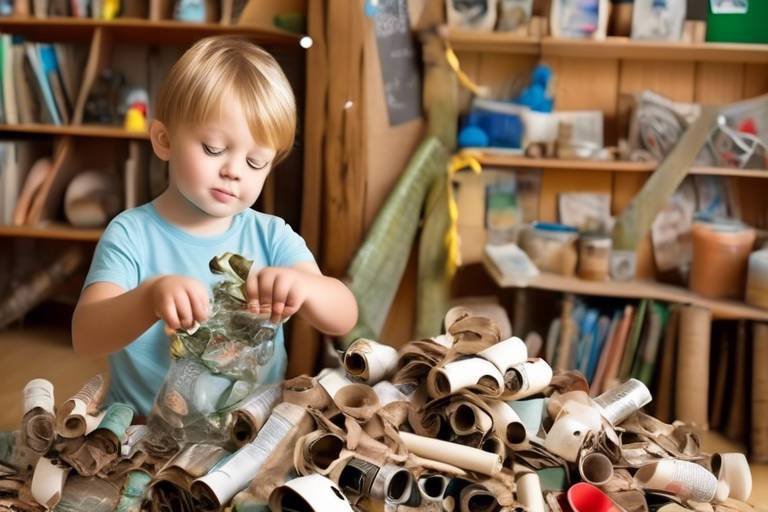How To Revamp Your Old Clothes By Upcycling
Are your old clothes gathering dust in the back of your closet? Instead of tossing them out, why not revamp them through the art of upcycling? This article explores creative ways to breathe new life into your old garments through upcycling, offering practical tips and inspiring ideas to transform your wardrobe sustainably. Upcycling not only helps you save money but also contributes positively to the environment. Imagine turning that old pair of jeans you never wear into a trendy bag or transforming a faded t-shirt into a stylish tank top. The possibilities are endless, and the results can be stunning!
So, what exactly is upcycling? At its core, upcycling is the process of transforming old or discarded materials into new products of higher quality or value. It’s like giving your clothes a second chance at life! The benefits of upcycling are numerous: it reduces waste, saves money, and allows for greater creativity in fashion. Instead of contributing to the fast fashion cycle, upcycling encourages a more sustainable approach to clothing. By choosing to upcycle, you're not just refreshing your wardrobe; you're also making a conscious choice to help the planet.
Before diving into your upcycling project, it's essential to gather the right materials. Start by rummaging through your wardrobe. Look for items that you no longer wear but still hold sentimental value, like that oversized sweater from your favorite concert or those jeans that no longer fit. When choosing suitable fabrics for your projects, consider the following:
- Durability: Ensure the fabric is sturdy enough for the new project.
- Texture: Different textures can add unique flair to your creations.
- Color: Think about how the color can be transformed or combined with other fabrics.
Gathering these materials will set the stage for your creative journey!
Having a grasp of basic sewing techniques is crucial for successful upcycling. You don’t need to be a sewing expert to start transforming your clothes. Here are some essential skills to master:
- Stitching: Learn the basic stitches, such as straight and zigzag stitches, to secure fabric pieces together.
- Hemming: This technique allows you to finish the edges of your fabric, preventing fraying.
- Patching: Perfect for repairing holes or adding decorative elements to your garments.
These skills will empower you to tackle various projects with confidence and creativity.
Now that you have your materials and skills ready, let’s explore some innovative ideas for upcycling clothing. Here are a few projects to ignite your creativity:
- Turn Jeans into Bags: Cut and sew your old jeans into a stylish tote bag.
- T-shirts into Tank Tops: Transform old t-shirts into trendy tank tops by cutting off the sleeves and adding stylish details.
- Scarves into Headbands: Use fabric from old scarves to create unique headbands.
These projects not only give your clothes a new purpose but also allow you to express your personal style.
To make the upcycling process smoother, having the right tools is important. Here’s a quick list of essential tools you might need:
- Scissors: A good pair of fabric scissors is a must for clean cuts.
- Sewing Machine: While hand sewing is great, a machine can speed up the process.
- Fabric Glue: Perfect for quick fixes or adding embellishments without sewing.
Having these tools on hand will make your upcycling experience much more enjoyable!
Selecting a style that suits your taste and lifestyle is key to successful upcycling. Take a moment to reflect on what styles resonate with you. Are you drawn to bohemian vibes, or do you prefer a more minimalist approach? By identifying your personal style, you can incorporate it into your revamped pieces, ensuring they not only look good but also feel like you.
Upcycling can cater to various occasions, from casual wear to formal events. For instance, you can turn an old dress into a chic skirt for a night out or transform a button-up shirt into a stylish summer dress. The key is to think creatively about how you can adapt your clothing for specific events while maintaining a stylish appearance.
Once your upcycling projects are complete, sharing them can inspire others. Consider showcasing your creations on social media platforms like Instagram or Pinterest, where you can connect with fellow upcyclers and fashion enthusiasts. You might even want to participate in local craft fairs to share your passion for sustainable fashion. Your creativity could spark a movement!
Q: Can I upcycle any type of clothing?
A: Absolutely! Almost any type of clothing can be upcycled, but it’s best to choose items that are still in decent condition.
Q: Do I need to be an expert in sewing to upcycle?
A: Not at all! Basic sewing skills are sufficient for most upcycling projects, and there are plenty of resources available to help you learn.
Q: How much money can I save by upcycling?
A: The savings can vary, but upcycling can significantly reduce your clothing expenses, especially if you’re able to transform items you already own.
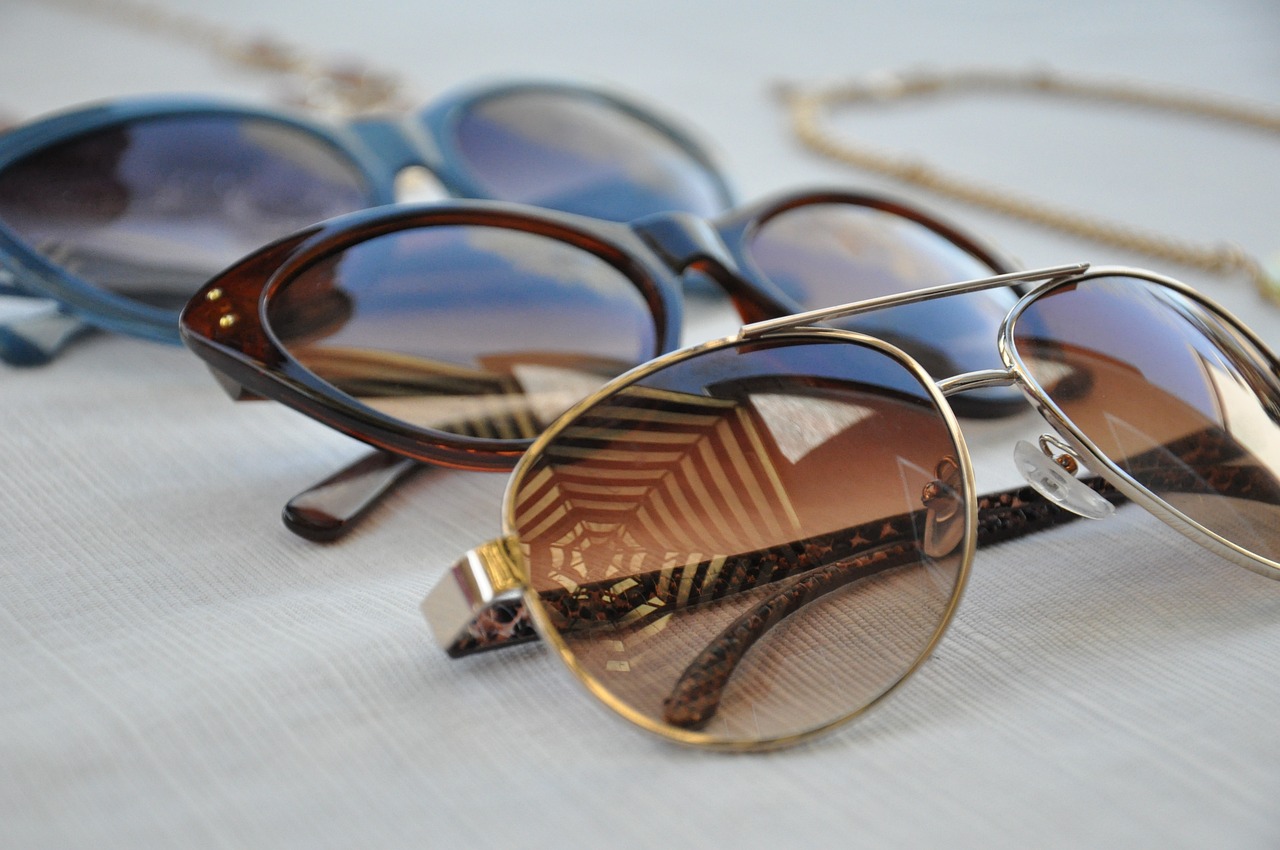
Understanding Upcycling
Upcycling is more than just a trendy buzzword; it's a powerful movement that encourages us to rethink our relationship with clothing and materials. At its core, upcycling refers to the process of taking old or discarded items and transforming them into something new and valuable. Think of it as giving your old garments a second chance at life, much like how a caterpillar becomes a butterfly. Instead of tossing out that worn-out shirt or those frayed jeans, why not turn them into chic accessories or stylish new outfits?
The benefits of upcycling extend far beyond just saving money or decluttering your closet. It plays a significant role in promoting sustainability within the fashion industry, which is notorious for its environmental impact. By choosing to upcycle, you're not only reducing waste but also minimizing the demand for new materials. This is crucial, considering that the fashion industry is responsible for a staggering amount of pollution and resource depletion. So, when you upcycle, you’re not just being creative; you’re also being a responsible consumer!
Moreover, upcycling allows for a unique form of self-expression. Each piece you create tells a story, reflecting your personal style and creative flair. Whether it's turning an oversized sweater into a trendy crop top or transforming a pair of jeans into a stylish tote bag, the possibilities are endless. You get to play fashion designer, making one-of-a-kind pieces that no one else will have. Imagine walking into a room wearing something that you crafted yourself—how empowering is that?
To understand upcycling better, consider the following key points:
- Creativity: Upcycling encourages you to think outside the box and use your imagination. It's about seeing potential where others see waste.
- Environmental Impact: By upcycling, you contribute to reducing landfill waste and lowering your carbon footprint.
- Cost-Effective: Upcycling can save you money, as it allows you to refresh your wardrobe without spending a dime on new clothes.
In essence, upcycling is a win-win situation. You get to express your creativity, make sustainable choices, and save money—all while keeping your wardrobe fresh and unique. So, the next time you look at your closet, remember that every piece has the potential to be transformed into something spectacular. Let’s dive deeper into the world of upcycling and discover how you can start your journey today!
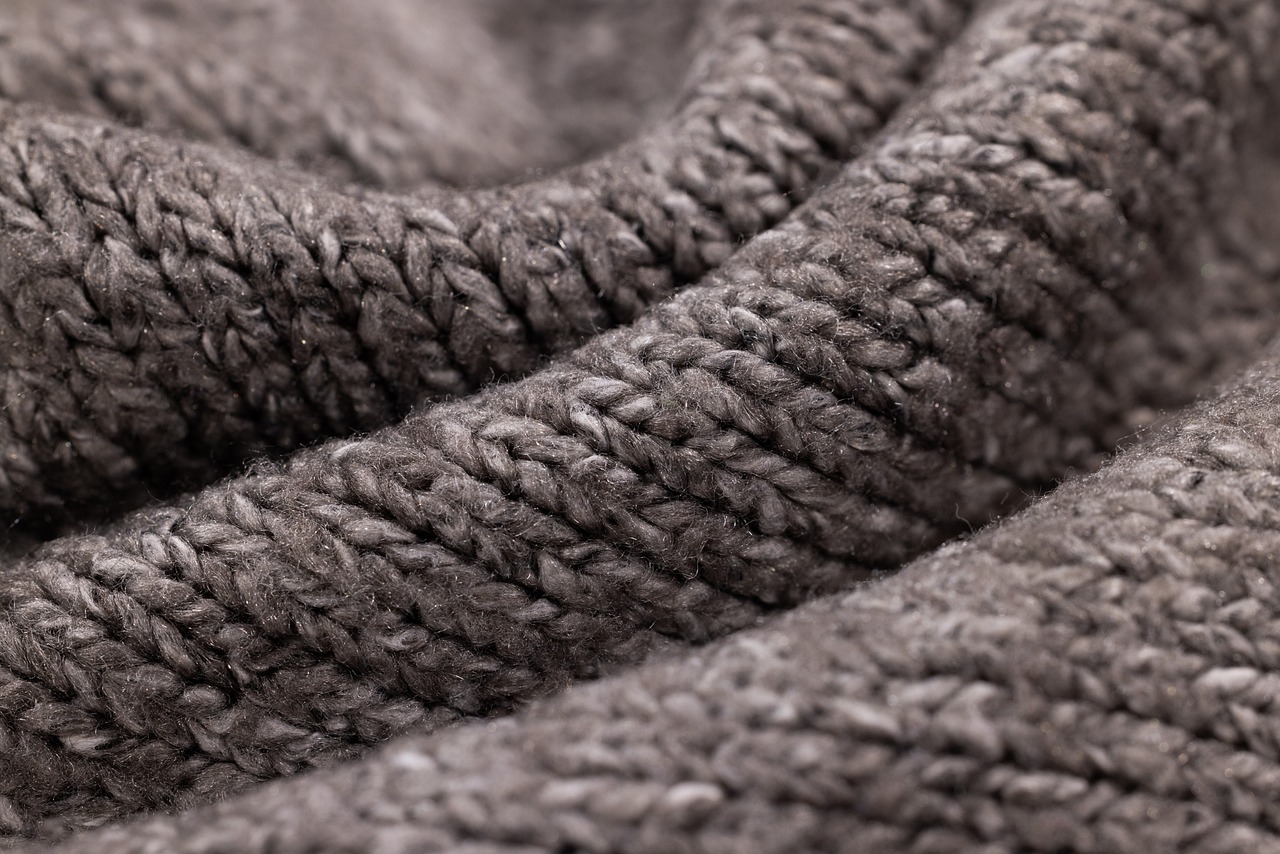
Gathering Materials
Before diving into the exciting world of upcycling, it's crucial to gather the right materials. Think of this step as laying the foundation for a beautiful house; without the right bricks, your masterpiece might not stand tall. Start by rummaging through your wardrobe and identifying old clothes that you no longer wear. Look for items that have potential—those jeans with a tear, a shirt that’s lost its shape, or that dress you wore once but can’t seem to part with. Each piece can tell a new story with a little creativity!
When selecting garments for upcycling, consider the following factors:
- Fabric Quality: Choose materials that are still in good condition. Natural fibers like cotton, linen, and wool are often easier to work with and provide a better finish.
- Color and Pattern: Look for colors and patterns that inspire you. A vibrant print can be transformed into something eye-catching!
- Size and Fit: Larger items can often be cut down or altered more easily, giving you more fabric to work with.
Once you've gathered a selection of clothes, it’s time to think about additional materials. You might need some extra fabric for patches or embellishments. Old curtains, tablecloths, or even bed sheets can be fantastic sources of fabric. Don't forget about accessories like buttons, zippers, and lace that can add unique touches to your creations.
In addition to fabric, consider the tools you’ll need for your upcycling projects. A good pair of scissors is essential for cutting fabric, while a sewing machine can save you a lot of time and effort. If you’re not ready to sew, fabric glue can be a fantastic alternative for certain projects. Having these tools at your disposal will make the whole process smoother and more enjoyable.
Finally, don't overlook the power of inspiration! Browse through online platforms like Pinterest or Instagram to see what others are creating. This can spark new ideas and help you visualize how different materials can come together. Remember, upcycling is all about creativity and personal expression, so gather what speaks to you, and let your imagination run wild!
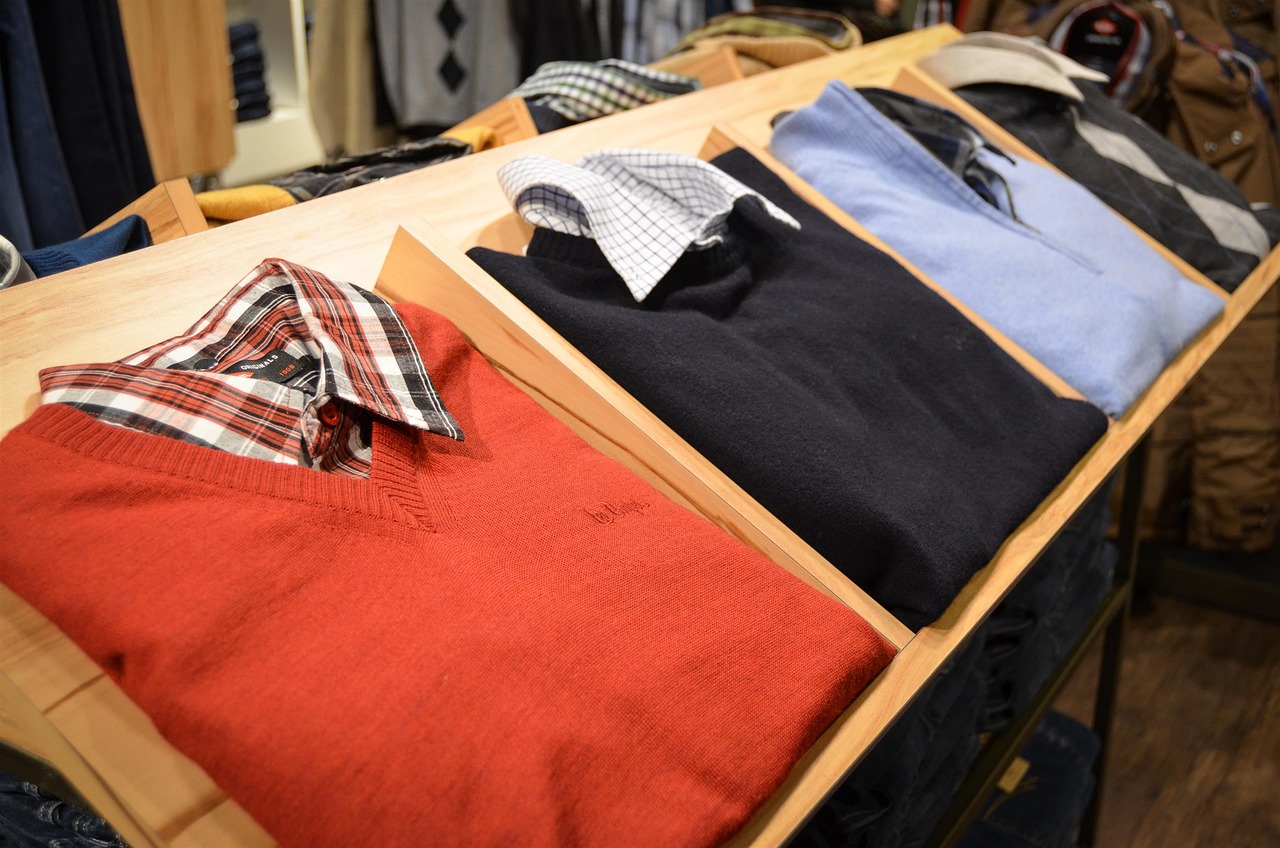
Basic Sewing Techniques
This article explores creative ways to breathe new life into your old garments through upcycling, offering practical tips and inspiring ideas to transform your wardrobe sustainably.
Upcycling is the process of transforming old or discarded materials into new products. This section delves into its definition, benefits, and how it contributes to sustainability in fashion.
Before starting your upcycling project, it's essential to gather the right materials. This section discusses what items to look for in your wardrobe and how to choose suitable fabrics for your projects.
Having a grasp of is crucial for successful upcycling. Think of sewing as the magic wand that can transform your old clothes into something fabulous. Whether you're a complete novice or someone who has dabbled in sewing, mastering a few essential skills can make all the difference in your upcycling journey.
First off, let’s talk about stitching. This is the foundation of any sewing project. A simple straight stitch can hold pieces together, while a zigzag stitch can prevent fabric edges from fraying. If you’re feeling adventurous, you can even explore decorative stitches to add flair to your creations. Don’t worry if you make mistakes; every stitch is a learning opportunity!
Next, we have hemming. This technique is essential for giving your garments a polished finish. Whether you’re shortening a pair of jeans or creating a new hem for a skirt, knowing how to hem will ensure your projects look professional. You can opt for a hand-stitched hem for a more traditional look or use a sewing machine for a quicker finish.
Another important technique is patching. This can be a fun way to incorporate personality into your upcycled pieces. You can patch up holes or tears in denim with contrasting fabrics or even use patches with fun designs. This not only saves the garment but also adds a unique touch that makes it stand out.
To help you get started, here’s a quick overview of some basic sewing techniques:
| Technique | Description | Use Cases |
|---|---|---|
| Straight Stitch | A basic stitch that holds fabric pieces together. | General sewing, seams |
| Zigzag Stitch | A stitch that prevents fraying and adds elasticity. | Finishing edges, knits |
| Hemming | Finishing the edge of fabric to prevent fraying. | Skirts, pants, sleeves |
| Patching | Repairing holes with fabric pieces. | Denim, jackets, shirts |
Remember, the more you practice, the better you’ll get. So grab some fabric scraps, your sewing machine, or needle and thread, and start experimenting! Upcycling is not just about creating new clothes; it’s about expressing your creativity and personal style. So don’t hold back—let your imagination run wild!
This section presents innovative ideas for upcycling clothing, including turning jeans into bags, t-shirts into tank tops, and more. Explore various projects to inspire your creativity.
To make the upcycling process smoother, having the right tools is important. This section lists essential tools, such as scissors, sewing machines, and fabric glue, that will aid in your projects.
Selecting a style that suits your taste and lifestyle is key to successful upcycling. This section discusses how to identify your personal style and incorporate it into your revamped pieces.
Upcycling can cater to various occasions, from casual wear to formal events. This section explores how to transform clothing for specific events while maintaining a stylish appearance.
Once your upcycling projects are complete, sharing them can inspire others. This section discusses platforms and methods for showcasing your creations, from social media to local craft fairs.
Q: What is upcycling?
A: Upcycling is the creative process of transforming old or discarded materials into new products, often enhancing their value and functionality.
Q: Do I need to be an expert in sewing to upcycle?
A: Not at all! Basic sewing skills are helpful, but many upcycling projects can be done with minimal sewing or even no sewing at all.
Q: How do I choose the right materials for upcycling?
A: Look for garments that are in good condition but may not fit your style anymore. Natural fabrics like cotton and linen are often easier to work with.
Q: Can upcycling help the environment?
A: Yes! Upcycling reduces waste by giving new life to old garments, which helps decrease the demand for new textiles and the environmental impact associated with their production.
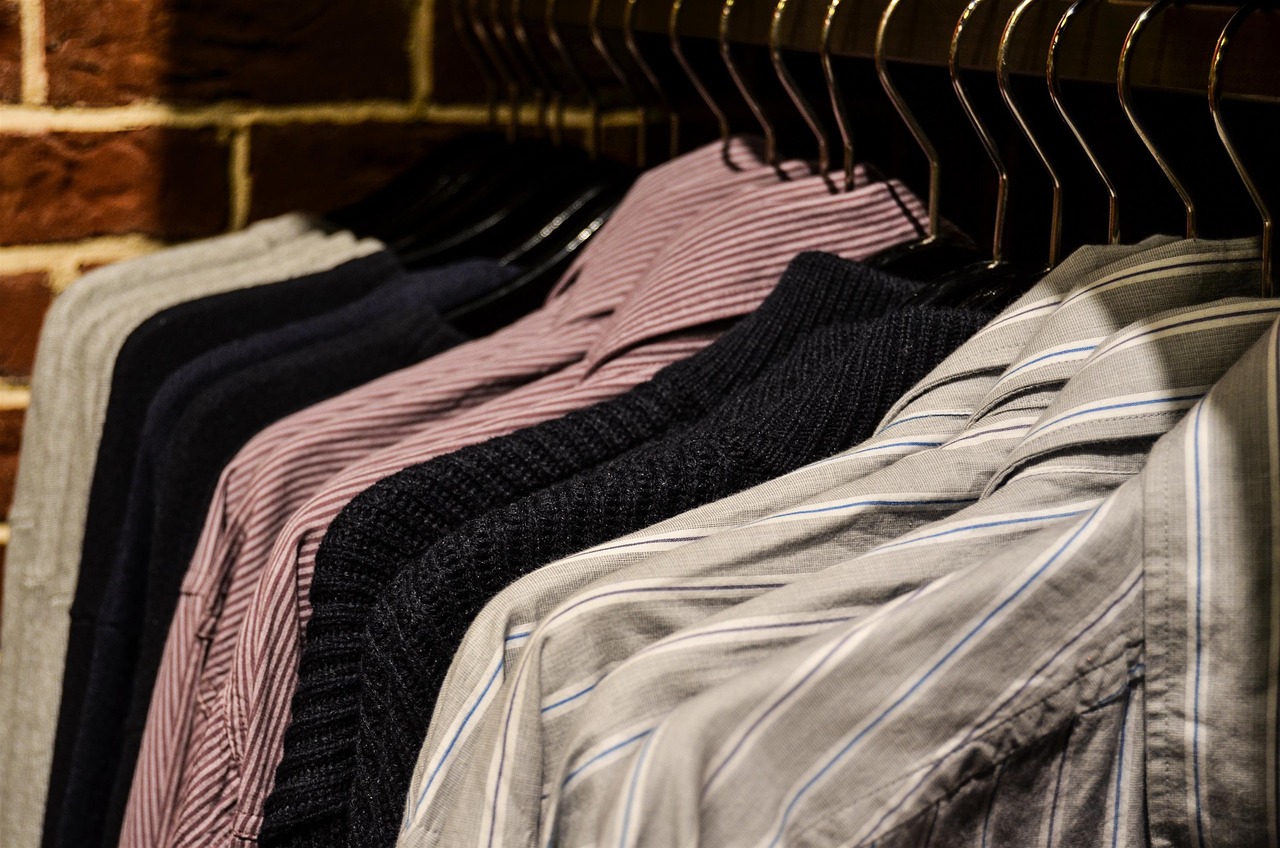
Creative Ideas for Upcycling
When it comes to upcycling, the only limit is your imagination! Transforming your old garments into something fresh and exciting can be both a fun and rewarding experience. Picture this: that worn-out pair of jeans you've been holding onto for years can become a stylish tote bag or a chic pair of shorts. The key is to see potential where others see waste. Let's dive into some creative ideas that will inspire you to give your wardrobe a second life!
One popular project is turning jeans into bags. Start by cutting off the legs of your jeans, then sew the bottom shut to create a simple bag. You can add straps made from the remaining fabric or even use an old belt for a unique touch. This not only reduces waste but also gives you a one-of-a-kind accessory that tells a story.
Another fantastic idea is to transform t-shirts into tank tops. Simply cut the sleeves off and shape the neckline to your liking. This is a great way to repurpose shirts that may have sentimental value but are no longer wearable. You can even add embellishments like lace or fabric paint to personalize your new tank top further.
Have you ever thought about making patchwork quilts? Gather up those old shirts, dresses, and even leftover fabric scraps. Cut them into squares and sew them together to create a cozy quilt. This project not only keeps you warm but also serves as a beautiful reminder of cherished memories.
If you have a collection of old sweaters, consider turning them into mittens or headbands. Simply cut and sew the fabric into the desired shape. The soft, warm material is perfect for chilly days, and you’ll feel good knowing you’ve given those sweaters a new purpose.
For a more advanced project, why not try your hand at upcycling furniture? Old clothing can be used to reupholster chairs or create unique cushion covers. Imagine a vintage chair adorned with fabric from your favorite dress! This not only adds character to your home but also showcases your creativity.
Lastly, don’t forget about accessories. Old ties can be transformed into trendy headbands or bracelets. Just cut, braid, or sew them together to create something entirely new. With a little creativity, you can turn forgotten items into statement pieces that reflect your personal style.
In conclusion, upcycling is all about creativity and resourcefulness. Whether you’re turning jeans into bags or t-shirts into tank tops, the possibilities are endless. So next time you consider tossing out old clothes, think twice! You might just create something beautiful and unique. Remember, each project is an opportunity to express yourself and contribute to a more sustainable world.
Q: What is upcycling?
A: Upcycling is the process of taking old or discarded materials and transforming them into new products, often enhancing their value or usefulness.
Q: Do I need sewing skills for upcycling?
A: While basic sewing skills can be helpful, many upcycling projects can be completed with minimal sewing or even using fabric glue.
Q: Can I upcycle items other than clothing?
A: Absolutely! Upcycling can be applied to various materials, including furniture, home decor, and even kitchen items.
Q: Where can I find inspiration for upcycling?
A: Social media platforms like Pinterest and Instagram are great places to find upcycling ideas and tutorials. Local craft fairs and workshops also offer inspiration and guidance.
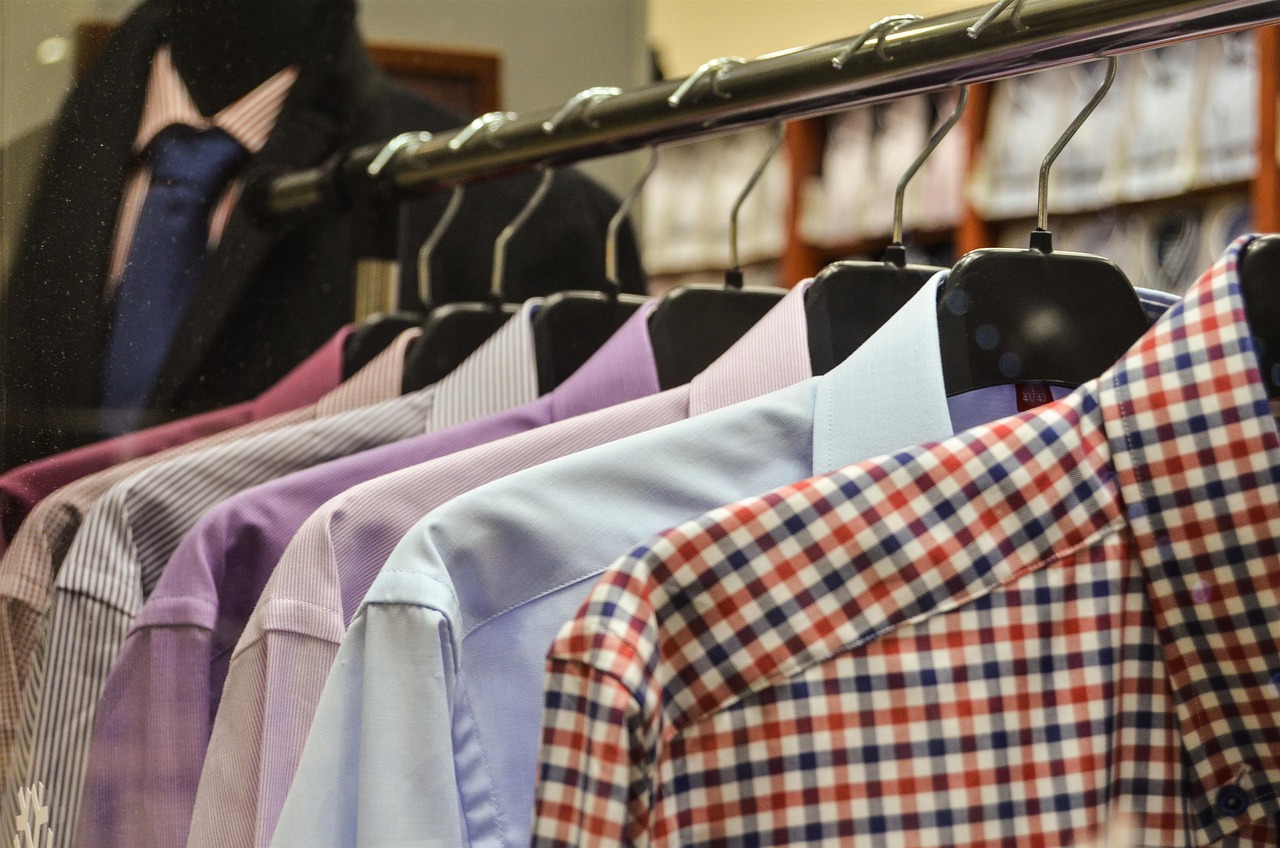
Tools You’ll Need
When it comes to upcycling your old clothes, having the right tools at your disposal can make all the difference between a frustrating experience and a creative breeze. Think of it like cooking; you wouldn't want to whip up a gourmet meal without the right utensils, right? Similarly, your upcycling projects require a few essential tools to help you transform those tired garments into something fresh and fabulous.
First and foremost, a good pair of scissors is crucial. You want a pair that can cut through fabric easily without fraying the edges. Investing in a quality pair can save you time and effort, allowing for cleaner cuts and better results. Another indispensable tool is a sewing machine. While some projects can be completed by hand, a sewing machine will speed up the process significantly and give your pieces a more professional finish. If you're just starting out, don't worry too much about having the latest model; even a basic machine will do the trick.
In addition to these, fabric glue is a handy alternative for those who may not be comfortable with sewing yet. It's perfect for quick fixes and can be a great way to attach patches or embellishments without the need for stitching. You might also want to keep a measuring tape close by. Accurate measurements are key to ensuring that your upcycled items fit well and look great. A seam ripper is another tool that can come in handy for removing stitches from old garments; it’s like having a magic wand that helps you undo mistakes or take apart pieces you want to rework.
Lastly, consider having a variety of needles and threads on hand. Different fabrics require different types of needles, and having a selection of thread colors will allow you to match your projects perfectly. You can even create a mini toolbox dedicated to your upcycling supplies, making it easier to grab everything you need when inspiration strikes. Here’s a quick overview of essential tools you should gather:
| Tool | Purpose |
|---|---|
| Scissors | For cutting fabric and threads |
| Sewing Machine | For stitching pieces together efficiently |
| Fabric Glue | For quick fixes and attaching patches |
| Measuring Tape | For accurate measurements |
| Seam Ripper | For removing stitches |
| Needles and Threads | For sewing various fabrics |
With these tools in your arsenal, you're well-equipped to dive into the world of upcycling. Remember, the journey of transforming your old clothes into something new and exciting is not just about the end product; it's about enjoying the creative process. So gather your tools, unleash your imagination, and let the upcycling adventure begin!
Q: Do I need to be an expert in sewing to upcycle my clothes?
A: Not at all! Basic sewing skills are helpful, but many upcycling projects can be done with minimal sewing or even just fabric glue.
Q: Can I upcycle any type of fabric?
A: Most fabrics can be upcycled, but consider the weight and stretch of the material. Denim and cotton are great options for beginners.
Q: Where can I find inspiration for upcycling projects?
A: You can find inspiration online through platforms like Pinterest, Instagram, or even YouTube tutorials. Local craft fairs can also be a great source of ideas!
Q: What if I make a mistake during my project?
A: Mistakes are part of the creative process! You can always use a seam ripper to undo stitches or repurpose the fabric into something else.

Choosing the Right Style
When it comes to upcycling your old clothes, one of the most exciting yet challenging aspects is . It's not just about taking a pair of old jeans and cutting them into shorts; it’s about creating pieces that reflect your unique personality and fit seamlessly into your lifestyle. Have you ever opened your closet and felt overwhelmed by options? That’s where understanding your personal style comes into play. Think of your wardrobe as a canvas waiting for your artistic touch!
To start, take a moment to consider what styles resonate with you. Are you drawn to bohemian vibes, or do you prefer a more classic, tailored look? Understanding your style can help you make decisions about how to transform your old garments. For instance, if you love the vintage aesthetic, consider upcycling a long, flowing dress into a cute top paired with high-waisted jeans. On the other hand, if you lean towards a more modern, minimalist style, perhaps a simple t-shirt can be turned into a chic cropped version that pairs well with everything from skirts to shorts.
Another important aspect is to think about how you want your upcycled pieces to function in your life. Do you need more casual wear, or are you looking to create something special for a formal occasion? The purpose of the clothing can greatly influence the style choices you make. For example, transforming an old blazer into a stylish vest can elevate your casual outfits, making them more polished without losing comfort. The key is to envision how each piece will fit into your daily routine.
It can also be helpful to look for inspiration from various sources. Websites like Pinterest and Instagram are treasure troves of creative ideas. You can find countless examples of upcycled clothing that can ignite your imagination. As you browse, pay attention to color palettes, fabric combinations, and overall silhouettes that catch your eye. You might find that certain trends resonate with you, giving you a clearer vision of what you want to create.
Lastly, don’t forget to consider the practicality of your upcycled creations. While it’s fantastic to dream big, it’s equally important to ensure that your new pieces are wearable and comfortable. You wouldn’t want to spend hours crafting something that you’ll only wear once! Take into account the fabrics and styles that suit your body type and personal preferences. For instance, if you adore flowy garments but find them impractical for everyday wear, consider adding structure to your designs.
In conclusion, choosing the right style for your upcycling projects is a blend of self-expression and practicality. Embrace the process of discovery, and don’t be afraid to experiment. After all, fashion is all about having fun and showcasing who you are. With each piece you transform, you’re not only revamping your wardrobe but also telling a story that’s uniquely yours. So grab those scissors, channel your inner designer, and let your creativity shine!
- What is upcycling? Upcycling is the process of transforming old or discarded materials into new products, enhancing their value and reducing waste.
- How do I choose the right style for upcycling? Consider your personal style, the purpose of the clothing, and seek inspiration from various sources to guide your decisions.
- Can I upcycle any type of clothing? Yes, most clothing items can be upcycled, but some fabrics may be easier to work with than others. Look for materials that are durable and comfortable.
- Do I need sewing skills to upcycle? Basic sewing skills can be helpful, but there are many no-sew techniques available as well. Start with what you're comfortable with!
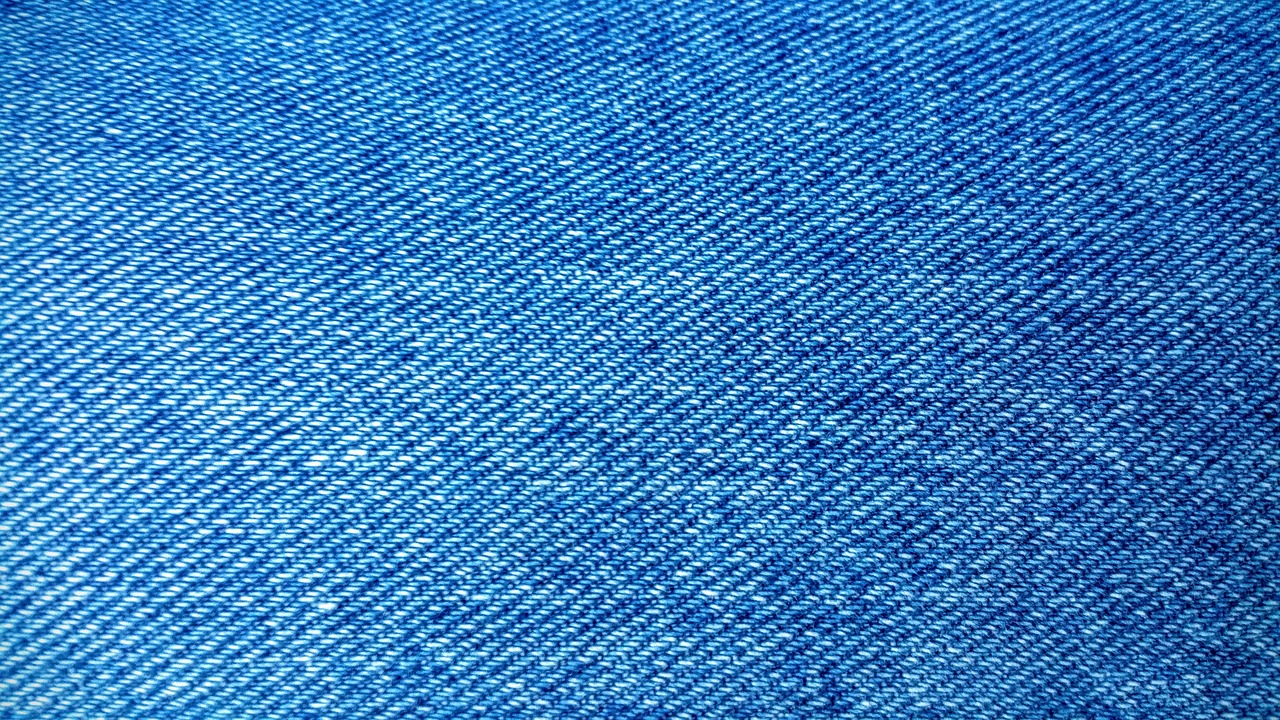
Upcycling for Different Occasions
When it comes to upcycling, the possibilities are as vast as your imagination! Whether you're dressing for a casual day out, a formal event, or something in between, upcycling your old clothes can help you create unique pieces that reflect your personal style. Imagine turning a pair of faded jeans into a trendy bag for a weekend adventure or transforming a simple t-shirt into a chic tank top for a summer night out. The beauty of upcycling lies in its versatility, allowing you to tailor your creations to fit any occasion.
For casual outings, consider reworking oversized shirts into stylish crop tops. This transformation not only gives you a fresh look but also allows you to play with different patterns and colors. Pair your new crop top with high-waisted shorts or a flowy skirt, and you’re ready to hit the town! Another fun idea is to take an old hoodie and cut it into a fashionable off-shoulder sweater. This relaxed style is perfect for a cozy coffee date or a casual stroll in the park.
When it comes to formal events, upcycling can be equally exciting. You can take an old dress and give it a new lease on life by adding lace details or embellishments. Imagine a simple black dress transformed into a stunning evening gown with just a few modifications! You could also consider turning a long skirt into a sophisticated midi dress by adding a fitted bodice. The key is to focus on the details that will elevate your outfit, making you stand out in a crowd.
For special occasions like weddings or parties, don’t shy away from experimenting with colors and fabrics. A vintage blouse can be paired with a modern skirt, or you can mix and match different textures to create a visually appealing ensemble. If you have a collection of scarves, think about sewing them together to make a unique wrap or shawl that can complement any outfit. The goal is to express your creativity while ensuring that your upcycled pieces are suitable for the event.
Moreover, upcycling isn't just about clothing; it can extend to accessories too! Consider creating statement jewelry from old buttons, or turning fabric scraps into beautiful hair accessories. These small touches can elevate your overall look, making your outfit truly one-of-a-kind. So, whether you’re dressing for a casual day or a formal night, remember that upcycling allows you to express your individuality while being eco-conscious.
In conclusion, upcycling for different occasions is all about understanding the context and being creative with what you have. By reimagining your old garments, you not only save money but also contribute to a more sustainable fashion industry. So grab those scissors, unleash your creativity, and start transforming your wardrobe today!
Q: What is upcycling?
A: Upcycling is the process of transforming old or discarded materials into new products, often with a higher value or quality than the original item.
Q: Do I need to be an expert sewer to upcycle?
A: Not at all! Basic sewing skills can go a long way, and there are many projects that require minimal sewing or can be done with fabric glue.
Q: How can I find inspiration for upcycling projects?
A: Inspiration can be found everywhere! Check out social media platforms like Pinterest and Instagram, or browse through DIY blogs and videos.
Q: What tools do I need for upcycling?
A: Essential tools include scissors, a sewing machine (if you sew), fabric glue, and various sewing supplies like needles and threads.
Q: Can I upcycle accessories as well?
A: Absolutely! Accessories such as bags, jewelry, and hairpieces can be upcycled just like clothing, allowing for even more creativity.
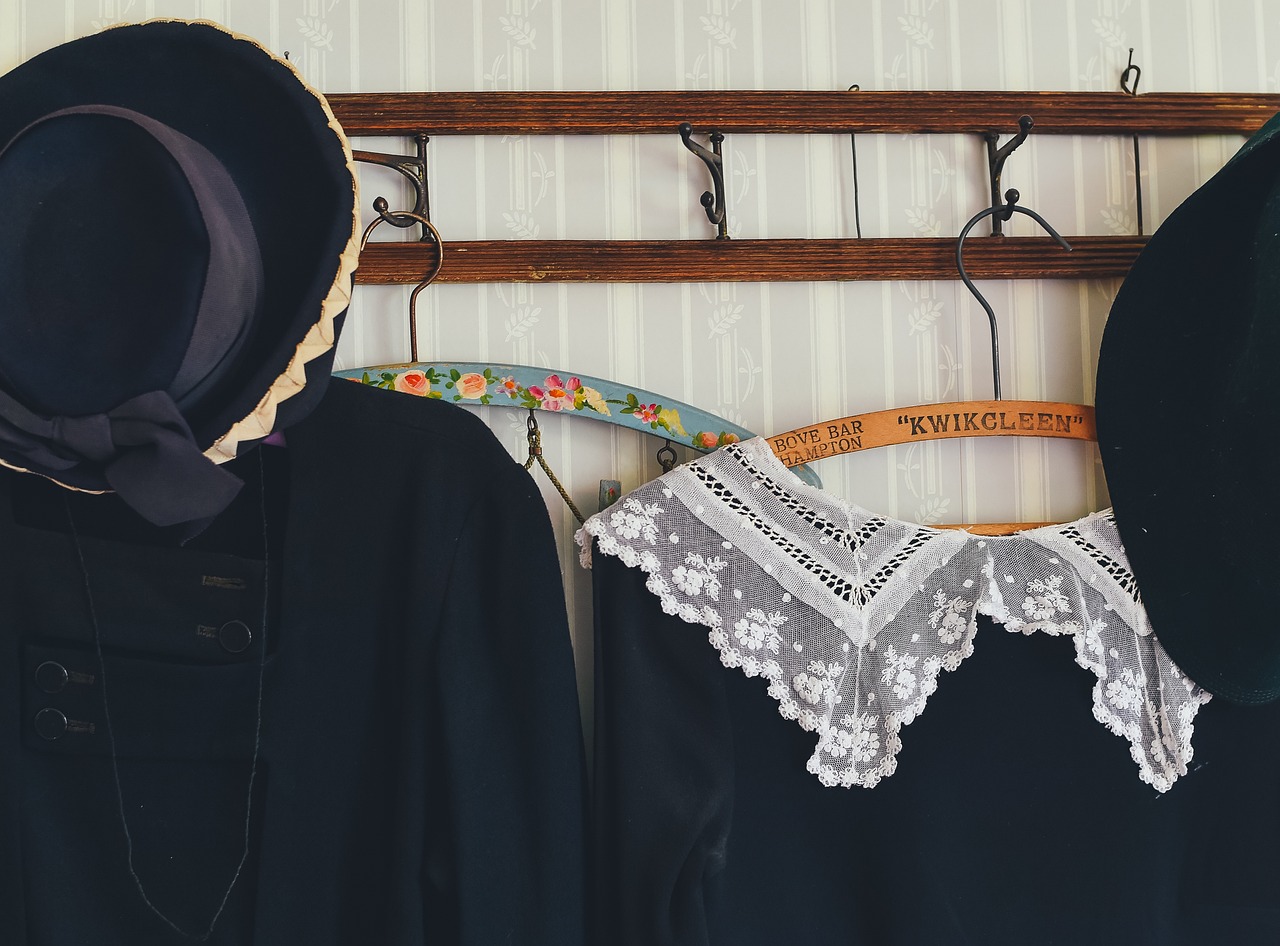
Sharing Your Upcycled Creations
Once you've transformed your old garments into stunning new pieces, it’s time to show them off! Sharing your upcycled creations not only allows you to celebrate your hard work and creativity but also inspires others to embark on their own sustainable fashion journeys. So, how can you effectively showcase your masterpieces? Here are some ideas to get you started!
First off, social media is a fantastic platform for sharing your upcycled creations. Platforms like Instagram, Pinterest, and Facebook are visual-centric and perfect for displaying your unique style. Consider creating a dedicated account or a specific hashtag for your upcycled projects. This way, you can connect with like-minded individuals who share your passion for sustainability and creativity. Don't forget to engage with your audience! Respond to comments, ask for feedback, and encourage followers to share their own upcycling adventures.
Another great way to share your work is through local craft fairs or community events. These venues allow you to showcase not only your creations but also your passion for upcycling. Set up a booth where you can display your items, talk to visitors about your process, and even offer mini workshops. This hands-on approach can create a buzz around your work and foster a community of fellow upcyclers.
Moreover, consider starting a blog or a YouTube channel where you can document your upcycling journey. Share tutorials, before-and-after photos, and tips that can help others get started. This not only establishes you as a knowledgeable figure in the upcycling community but also provides an avenue for creative expression. Think of it as your personal canvas where you can paint your journey with words and visuals!
Lastly, don't underestimate the power of word-of-mouth. Share your creations with friends, family, and coworkers. You might be surprised at how many people are interested in sustainable fashion and upcycling. Host a small gathering where you can showcase your work, perhaps even a clothing swap event where everyone can bring their old clothes and exchange ideas on upcycling.
In summary, sharing your upcycled creations can take many forms, from social media to local events. The key is to be authentic and passionate about your work. By doing so, you’ll not only inspire others but also help cultivate a community that values creativity and sustainability. So go ahead, let your creations shine, and watch as your passion for upcycling ignites a spark in others!
- What is upcycling? Upcycling is the process of taking old or discarded materials and transforming them into new products, often with a higher value or quality.
- Do I need sewing skills to upcycle clothes? While basic sewing skills can be helpful, many upcycling projects can be completed with minimal sewing knowledge. There are plenty of no-sew techniques available!
- Where can I find inspiration for upcycling projects? Inspiration can be found everywhere! Check out social media, DIY blogs, and even your own closet for ideas. Don't be afraid to get creative!
- Can I sell my upcycled creations? Absolutely! Many people successfully sell their upcycled items online through platforms like Etsy or at local craft fairs.
Frequently Asked Questions
- What is upcycling and how does it differ from recycling?
Upcycling is the creative process of transforming old or discarded items into something new and useful, often enhancing their value and appeal. Unlike recycling, which breaks materials down to create new products, upcycling retains the original item's form while giving it a new purpose. Think of it as giving your old clothes a makeover rather than tossing them into a recycling bin!
- What materials should I look for when upcycling my clothes?
When rummaging through your wardrobe, look for items that you no longer wear or that have minor damages, like a torn hem or a stain. Fabrics such as denim, cotton, and even old t-shirts can be great for upcycling projects. The key is to find materials that inspire you and can be transformed into something fabulous!
- Do I need to be an expert sewer to upcycle my clothes?
Not at all! While basic sewing skills can be helpful, many upcycling projects can be completed with minimal sewing or even no sewing at all. There are plenty of tutorials that use fabric glue or simple hand-stitching techniques, making it accessible for everyone. Just dive in and have fun!
- Can you give me some creative ideas for upcycling?
Absolutely! Here are a few fun ideas to spark your creativity:
- Turn an old pair of jeans into a stylish tote bag.
- Transform a long-sleeve t-shirt into a trendy tank top.
- Create unique home decor items, like cushion covers from old sweaters.
- Make a patchwork quilt from various fabric scraps.
- What tools do I need to get started with upcycling?
Having the right tools can make your upcycling journey smoother! Basic tools you might need include:
- Scissors
- Sewing machine (optional, but helpful)
- Fabric glue
- Needles and thread
- Measuring tape
- How do I choose a style for my upcycled pieces?
Choosing a style is all about reflecting your personality and lifestyle! Think about what you love to wear and what makes you feel confident. Browse fashion blogs, Pinterest, or Instagram for inspiration, and don’t be afraid to experiment with different looks until you find what resonates with you.
- Can I upcycle clothes for special occasions?
Definitely! Upcycling can be a fantastic way to create unique outfits for any occasion. Whether it’s a casual brunch or a formal event, you can customize your upcycled pieces to fit the vibe. Just think about the event's dress code and let your creativity shine!
- How can I share my upcycled creations with others?
Once you've completed your upcycling projects, sharing them can be incredibly rewarding! You can post photos on social media platforms like Instagram or Facebook, join upcycling groups, or even participate in local craft fairs. Not only will you inspire others, but you might also connect with fellow upcycling enthusiasts!















